Disclosure: This article contains affiliate links. We may earn a commission from purchases at no extra cost to you, which helps our travel content.
Standing in the dappled light filtering through the forest of columns in Cordoba's Mezquita-Cathedral, I felt that familiar tension between past and present that defines so many of my consulting projects. The red and white striped arches stretched toward infinity, a testament to the layered history of Andalusia. This ancient Spanish city, once the intellectual capital of Europe, now balances its historical significance with modern luxury in ways that feel both authentic and indulgent. As someone who has spent his career helping properties honor cultural heritage while delivering exceptional experiences, Cordoba represents something of a masterclass in this delicate balance. My week here during the intoxicating jasmine-scented spring wasn't just another business trip—it became an immersion into how luxury can be defined not by excess, but by exclusivity, authenticity, and profound connection to place.
Historic Luxury: Palatial Accommodations in Cordoba
My professional assessments of luxury properties have taken me from remote Alaskan lodges to Patagonian estancias, but there's something uniquely compelling about hotels that thoughtfully inhabit historic spaces. In Cordoba, I chose to stay at the Hospes Palacio del Bailío, a 16th-century palace transformed into a five-star hotel that manages the rare feat of preserving historical integrity while offering contemporary comforts.
The property's most captivating feature reveals itself beneath your feet in the glass-floored central courtyard, where Roman ruins are dramatically illuminated. My suite occupied a corner of the former palace, with original frescoed ceilings floating above a minimalist modern design that didn't compete with the building's bones. Each morning, I'd enjoy breakfast in the orange-tree courtyard, the scent of citrus blossoms mingling with freshly baked bread and local olive oil.
For those seeking an even more intimate experience, the Balcón de Córdoba offers just ten rooms in a meticulously restored 17th-century convent. Its rooftop terrace provides what might be the city's most spectacular views of the Mezquita's bell tower, especially magical during sunset when the golden light warms the ancient stones.
While both properties exemplify thoughtful adaptive reuse of historic structures, they also demonstrate how luxury in the 21st century increasingly means access to experiences that can't be replicated or mass-produced. The concierge at Palacio del Bailío arranged a private evening tour of the nearby Palacio de Viana with its twelve distinctive courtyards—an experience that deepened my appreciation for Cordoba's architectural heritage in ways no daytime visit with crowds could match.
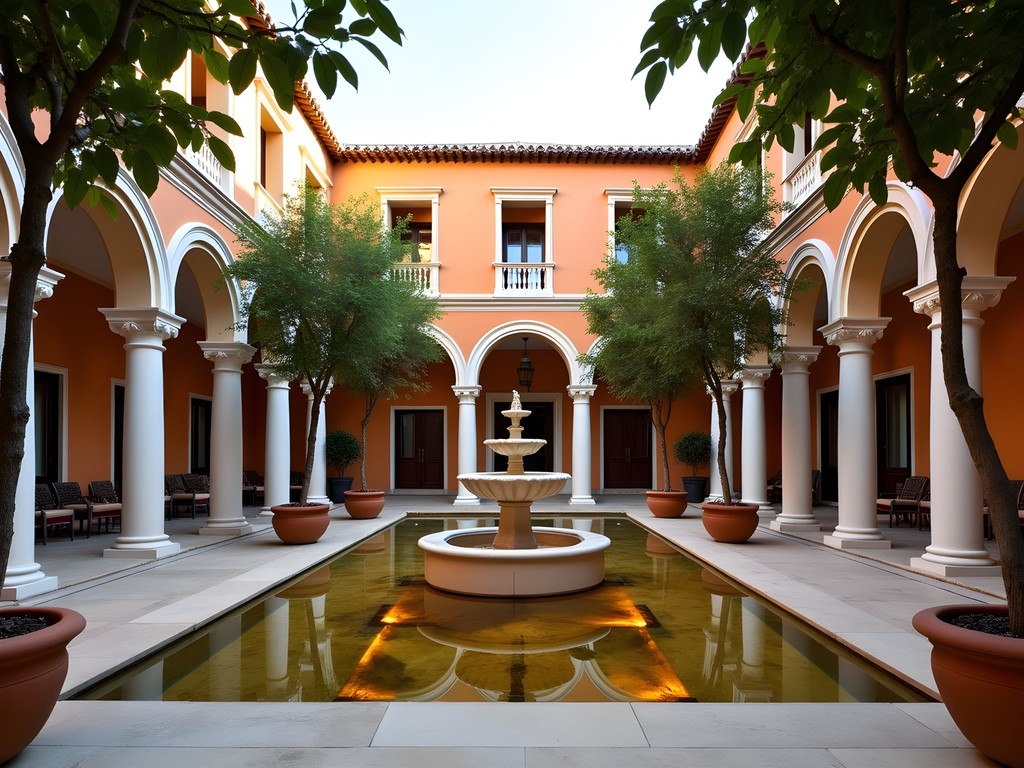
💡 Pro Tips
- Request a room overlooking one of the interior courtyards for the authentic Cordoban experience of living around a patio
- Book accommodations well in advance for May visits during the famous Patio Festival when the city is at its busiest
- Ask your concierge about after-hours private access to normally crowded attractions—many historic sites offer exclusive visits for luxury hotel guests
Private Access: Experiencing the Mezquita Without the Crowds
Any visitor to Cordoba will inevitably find themselves drawn to the Mezquita-Cathedral, the city's UNESCO World Heritage masterpiece. But the difference between shuffling through with hundreds of others versus experiencing it in contemplative semi-solitude represents exactly the kind of value proposition that defines modern luxury travel.
Through connections with a local cultural heritage consultant I've collaborated with on previous projects, I arranged a private early-morning visit before regular opening hours. Entering the vast prayer hall as dawn light began filtering through the eastern windows was nothing short of spiritual. My guide, Manuel, a professor of Islamic architectural history, provided context that transformed my appreciation of the space—pointing out details in the mihrab's intricate mosaics and explaining how the Christian cathedral was controversially inserted into the mosque's center in the 16th century.
For photography enthusiasts, these private moments are invaluable. I brought my mirrorless camera with a wide-angle lens, which proved perfect for capturing the seemingly endless arcades of candy-striped arches without other visitors in frame. The camera's excellent low-light performance handled the dim interior beautifully, though I'd recommend also bringing a compact tripod for longer exposures in certain areas.
Beyond the Mezquita, Cordoba offers several other opportunities for exclusive historical experiences. The Alcázar de los Reyes Cristianos can be visited through special arrangement with a historian guide who unlocks areas typically closed to the public. Similarly, the ancient synagogue in the Jewish Quarter offers after-hours musical performances that bring the space to life in profoundly moving ways.
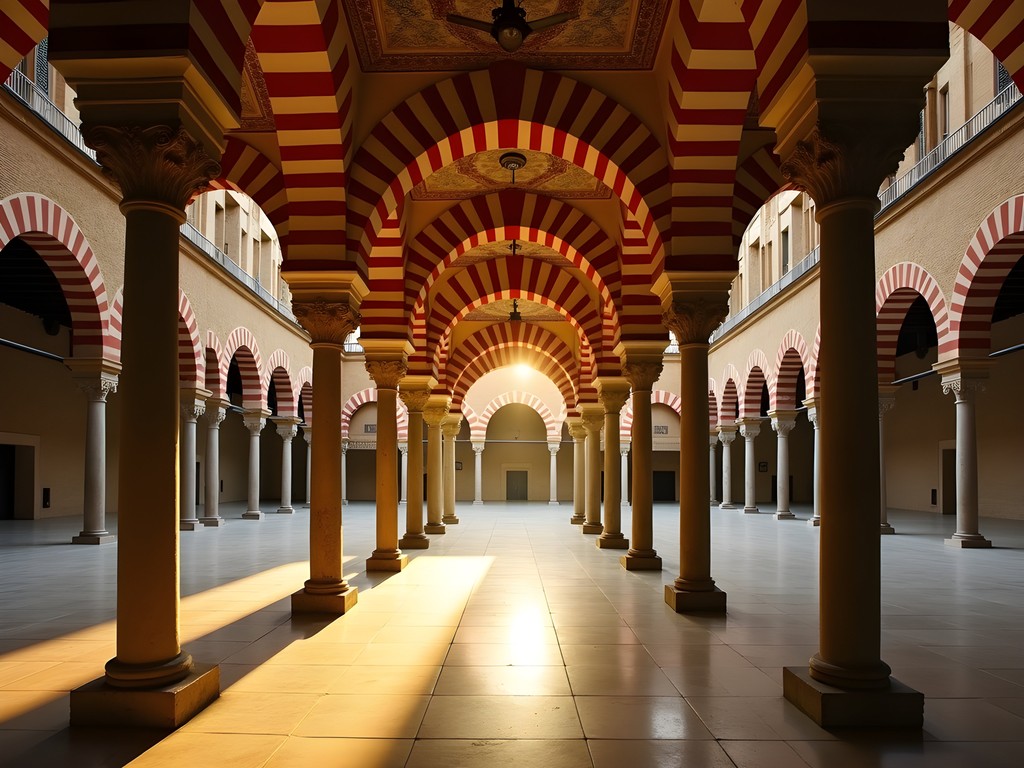
💡 Pro Tips
- Book private Mezquita access at least two months in advance through specialized tour operators or high-end hotel concierges
- Consider visiting during weekdays rather than weekends for a more contemplative experience even during regular hours
- Hire a specialized guide with academic credentials for deeper historical context that goes beyond standard tours
Andalusian Gastronomy: From Tabernas to Michelin Stars
My work in hospitality has taught me that truly memorable dining experiences combine exceptional cuisine with a sense of place. Cordoba's culinary scene exemplifies this philosophy, offering everything from centuries-old tabernas serving traditional salmorejo to innovative restaurants reimagining Andalusian classics.
For an immersive introduction to local gastronomy, I arranged a private cooking workshop with Chef Ana Carmona at her restored 18th-century home. The morning began with a guided tour through Mercado Victoria, where Ana introduced me to local producers while selecting ingredients. Back in her sun-drenched kitchen, I learned to prepare authentic salmorejo (Cordoba's creamier cousin to gazpacho), flamenquín (crispy rolled pork with serrano ham), and berenjenas con miel (fried eggplant drizzled with honey).
The workshop included a detailed introduction to Spanish olive oils, featuring a tasting flight of four regional varieties. I've since added a bottle of the exceptional premium olive oil to my pantry at home—its grassy, peppery notes instantly transport me back to Andalusia.
For evening dining, Cordoba offers surprisingly sophisticated options. Noor Restaurant, helmed by Chef Paco Morales, holds two Michelin stars for its contemporary interpretation of historical Al-Andalus cuisine. The tasting menu presents dishes based on recipes from specific years during the Caliphate period, using only ingredients available in Andalusia before the arrival of products from the Americas. The restaurant's minimalist design provides a contemplative backdrop for this culinary time travel.
For something more traditional yet equally refined, Casa Pepe de la Judería occupies a 16th-century house with multiple atmospheric dining rooms and a rooftop terrace overlooking the Mezquita. Their oxtail stew, slow-cooked for hours with local red wine, exemplifies the soulful cooking that has defined this region for centuries.

💡 Pro Tips
- Reserve Noor Restaurant at least two months in advance, especially during spring and fall high seasons
- Request the chef's table experience at Casa Pepe for a personalized menu featuring seasonal specialties
- Ask your hotel to arrange a private sherry tasting with a local sommelier to understand this quintessential Andalusian wine
Hammam Rituals: Ancient Relaxation with Modern Luxury
The hammam tradition in Cordoba isn't merely a tourist attraction—it's a living connection to the city's Moorish past when public baths were centers of community life. Today's luxury hammams honor these traditions while incorporating contemporary wellness approaches.
During my stay, I visited Hammam Al Ándalus, housed in a beautifully restored historic building near the Mezquita. The experience begins in the tepidarium (warm room), where heated marble benches and soft lighting encourage a gradual unwinding. Moving between rooms of varying temperatures—from the caldarium's enveloping heat to the frigidarium's refreshing cool—follows ancient Roman and Arab bathing traditions that once flourished throughout Andalusia.
What elevates this experience beyond a typical spa visit is the architectural authenticity and attention to historical detail. Intricately carved arches frame each space, while star-shaped skylights in the domed ceilings filter light through colored glass. The effect is transportive—a sensory journey to Cordoba's golden age.
I opted for the hammam ritual with a kessa exfoliation treatment followed by a massage using argan oil, which left my skin noticeably revitalized after days of travel. The therapist incorporated traditional techniques with modern knowledge of muscle physiology—exactly the kind of thoughtful fusion I appreciate in luxury wellness experiences.
For couples seeking a more private experience, several upscale hotels offer in-suite hammam services or private spa suite bookings. The Hospes Palacio del Bailío features an exceptional subterranean spa built around preserved Roman baths, where you can book evening sessions by candlelight with champagne service—the ultimate in romantic indulgence.
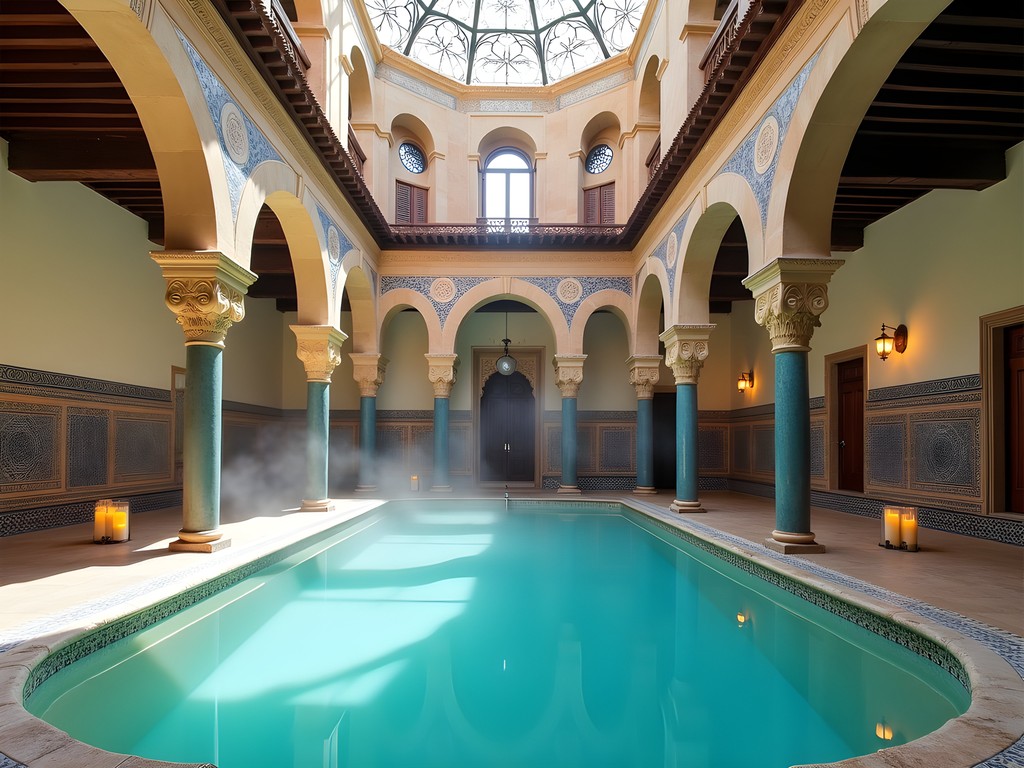
💡 Pro Tips
- Book hammam experiences for late afternoon when your body is naturally more receptive to the heat therapy
- Request the 'Ritual of Al Ándalus' package which includes the full thermal circuit plus a 30-minute massage
- Bring a swimsuit as they're required in public hammams, unlike traditional historical practice
Beyond the City: Exclusive Countryside Experiences
While Cordoba's urban treasures could easily fill a week, the surrounding countryside offers luxury experiences that provide deeper context for Andalusian culture. Having grown up learning traditional plant knowledge from my Tlingit grandparents, I'm always drawn to experiences that connect visitors to the agricultural heritage of a region.
Just thirty minutes from the city center, I visited Hacienda La Laguna, an organic olive estate where the same family has produced olive oil for seven generations. Unlike standard tours, my private experience began with a sunrise walk through centuries-old groves with the estate's agronomist, who explained their sustainable farming practices and ongoing adaptation to climate change challenges—a conversation that resonated with my professional focus on environmental stewardship in tourism.
The visit continued with an exclusive olive oil tasting masterclass in their stone mill building, where I learned to identify the subtle characteristics of oils from different olive varieties and harvesting times. What made this experience truly special was its personalization—the estate owner joined us for a private lunch featuring family recipes that have accompanied their oils for generations.
Another countryside highlight was an evening visit to a family-owned equestrian center specializing in Andalusian horses. Rather than the tourist-oriented shows found in Jerez or Seville, this intimate experience included a private demonstration of classical dressage followed by a sunset ride through the estate's ancient olive groves. For photography enthusiasts, the golden hour light illuminating the horses against the Sierra Morena mountains creates unforgettable images. I captured stunning shots with my telephoto zoom lens, which proved perfect for isolating the horses against the landscape while maintaining sharpness in challenging light conditions.
These countryside experiences represent luxury in its most meaningful form—exclusive access, personal connections, and authentic cultural immersion that goes beyond what mass tourism can provide.

💡 Pro Tips
- Schedule countryside excursions for weekdays when estates and facilities are less likely to have other visitors
- Request specialized experiences based on your interests—many estates can arrange focused workshops on wine, ceramics, or equestrian traditions
- Consider hiring a private driver familiar with rural Andalusia rather than navigating yourself, allowing full enjoyment of the scenery and local wines
Final Thoughts
As my week in Cordoba drew to a close, I found myself reflecting on how this ancient city exemplifies what I consider true luxury travel—experiences that engage all senses while deepening our connection to place and history. The value lies not in ostentation but in exclusivity, authenticity, and the privilege of time and space to appreciate cultural treasures on your own terms. Whether you're watching morning light filter through the Mezquita's arches in solitude, learning family recipes passed down through generations, or feeling the therapeutic warmth of hammam waters beneath star-shaped skylights, Cordoba offers indulgences that nourish both body and spirit. As I continue my work helping properties balance luxury with cultural and environmental responsibility, Cordoba will remain a touchstone—a place that demonstrates how the most meaningful opulence honors rather than overshadows heritage. I invite you to discover your own moment of connection in this extraordinary Andalusian jewel.
✨ Key Takeaways
- True luxury in Cordoba means exclusive access to cultural sites without crowds
- The city excels at adaptive reuse of historic buildings for high-end accommodations
- Authentic experiences with local experts provide deeper connection than standard luxury amenities
- Spring visits offer ideal weather plus the bonus of orange blossoms and the famous Patio Festival
📋 Practical Information
Best Time to Visit
Spring (April-May) or Fall (September-October)
Budget Estimate
$5,000-$7,000 per couple for a week including luxury accommodations, exclusive experiences, and fine dining
Recommended Duration
5-7 days
Difficulty Level
Easy

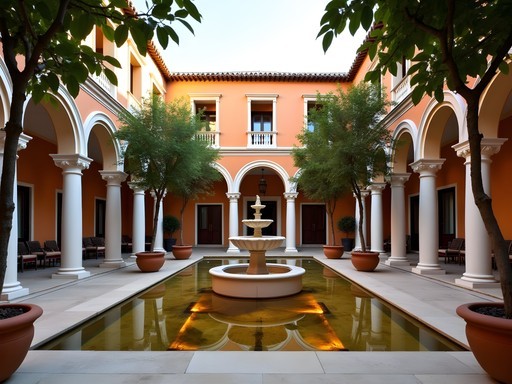


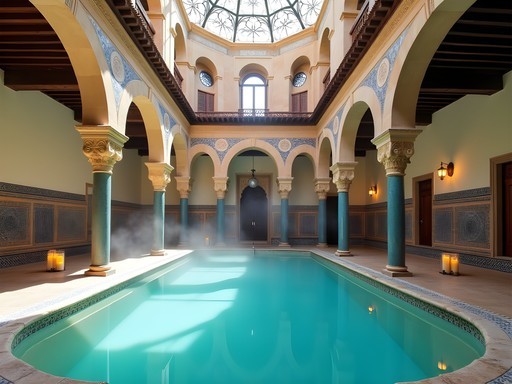




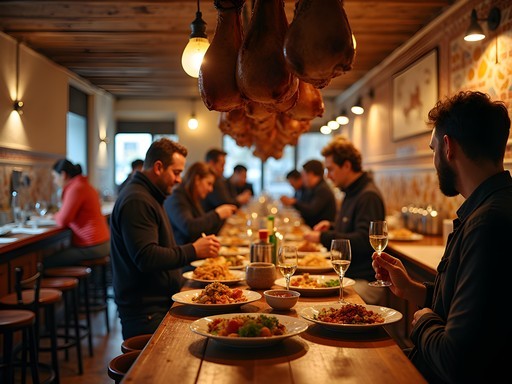
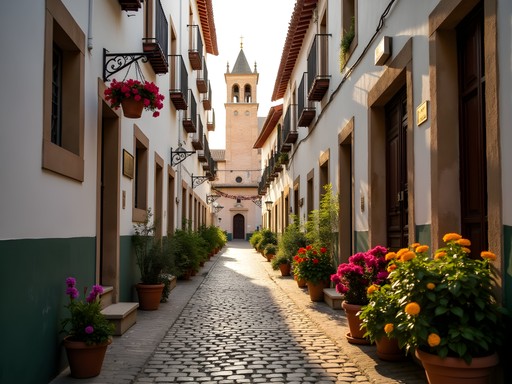
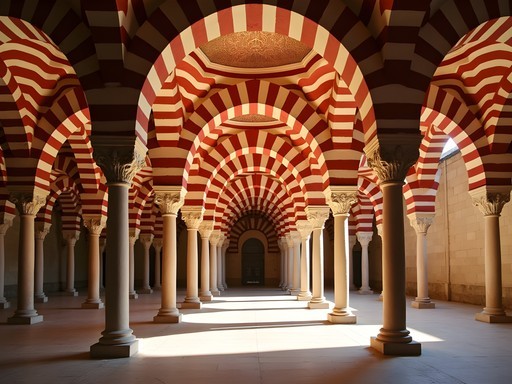




Comments
Hunter Thompson
Brilliant post, Tyler! I was in Cordoba last month on a backpacker's budget, but I still managed to enjoy some of the luxury experiences you mentioned. For those who can't afford the private Mezquita tour, going right at opening time (8:30am) gets you pretty close to that private feeling. Also found this amazing local-run food tour that hit some of the same gastronomy spots for a fraction of the price. I documented it all with my compact camera which was perfect for those low-light Mezquita shots! The contrast between the Moorish and Christian architecture is mind-blowing, isn't it?
vacationnomad
Hunter, would you mind sharing the name of that food tour? Sounds perfect for us!
Hunter Thompson
Sure thing! It was 'Cordoba Food Passion' run by a local chef named Miguel. They do small groups (max 6) and hit about 5-6 different spots. Great value at €65 including all food and drinks!
cityrider
Just got back from Andalusia last week. Cordoba was the highlight! Those hammams are incredible after walking all day.
dreamguy
The hammam ritual sounds amazing! Did you need to book in advance? And how much did the private Mezquita access cost? Heading there in November and would love to splurge on something special.
winterclimber
Not Tyler, but when I was there last year, definitely book the hammam at least a week in advance - they fill up quickly, especially for the evening sessions!
Tyler Miller
Winterclimber is right about booking the hammam in advance. For the private Mezquita access, it was around €150 per person through the hotel, but included a knowledgeable private guide. Worth every penny for the photos alone!
beachninja
How difficult was it to arrange that private access to the Mezquita? Is it something regular tourists can book or do you need special connections?
Tyler Miller
It's definitely available to regular tourists! Several tour companies offer early morning or evening private access tours, though they book up quickly. I used Cordoba Exclusive Tours and booked about 3 months in advance. The early morning light through those windows is absolutely magical.
vacationnomad
Planning a trip to Andalusia this winter. Which luxury hotel in Cordoba would you recommend the most? And is December a good time to visit?
Tyler Miller
December in Cordoba is lovely - fewer crowds and mild weather (though bring layers). I stayed at Hospes Palacio del Bailío and loved the historic building with modern amenities. The Hotel Madinat has an incredible rooftop view of the Mezquita if that's important to you!
winterclimber
That private access to the Mezquita sounds absolutely incredible! I visited Cordoba last year and while the Mezquita was stunning, it was packed with tourists. Having it almost to yourself must be such a different experience. Did you arrange that through your hotel? I stayed at a nice place but nothing offering that level of access. The hammam experience sounds divine too - definitely adding that to my list for next time!
Tyler Miller
Thanks for reading! Yes, the private access was arranged through the hotel concierge, but I believe there are specialized tour companies that offer early morning or evening access as well. It's definitely worth the splurge - seeing those columns without the crowds is magical.
winterclimber
Good to know! Will definitely look into that option next time. Thanks!
explorebuddy
That shot of the Mezquita columns is absolutely stunning! What camera do you use?
Tyler Miller
Thanks! Just my trusty Sony A7IV with a 24-70mm lens. The lighting in there is tricky but magical when you get it right!
John Hart
Tyler, excellent analysis of how Cordoba balances its historical significance with modern luxury. Having visited 37 UNESCO sites across Spain, I find Cordoba's approach to heritage preservation particularly noteworthy. The Mezquita-Cathedral represents one of the most fascinating architectural palimpsests in Europe - layers of history literally built upon one another. For those planning a visit, I'd recommend allocating at least 3 days to fully appreciate Cordoba. The Alcázar gardens are best visited early morning before the heat intensifies, while the Patios Festival in May transforms the city into a botanical wonderland. For transportation between historic sites, I found the folding city map invaluable as many digital maps don't accurately represent the medieval street layout.
exploreguide
Planning a trip to Cordoba next spring - is 3 days enough? Or should I extend?
globediver
We did 3 days and it felt perfect! Enough time to see everything without rushing but not so long you run out of things to do. Make sure you book Mezquita tickets in advance!
vacationking
Those food pics are making me hungry! Cordoba added to the bucket list!
Venture X
Premium card with 2X miles, $300 travel credit, Priority Pass